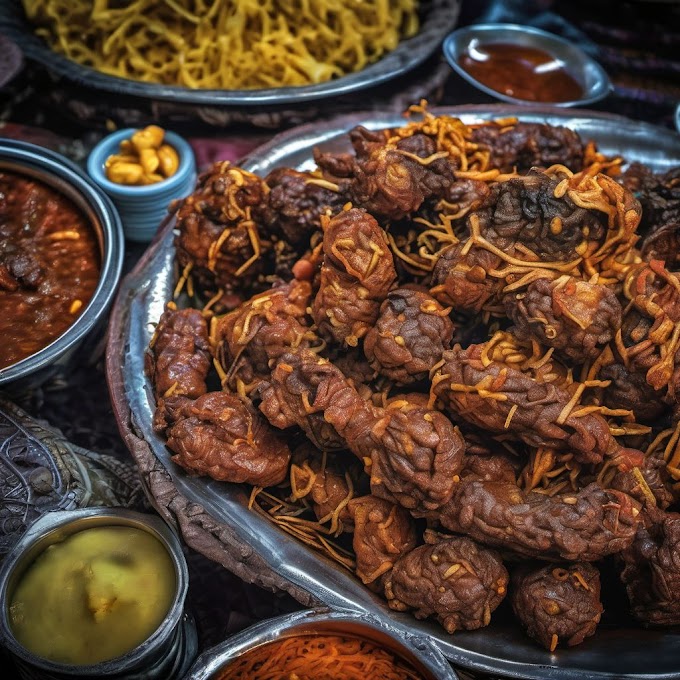




Middle Eastern cuisine is a rich and diverse culinary tradition that spans across numerous countries and cultures in the region. The cuisine is characterized by bold flavors, aromatic spices, and a harmonious blend of ingredients that have been influenced by centuries of trade, conquest, and cultural exchange. Here's an overview of the key features of Middle Eastern cuisine:
1. **Variety of Ingredients:** Middle Eastern cuisine relies heavily on ingredients such as grains (like rice and bulgur), legumes (such as chickpeas, lentils, and fava beans), vegetables (like eggplants, tomatoes, and onions), and a variety of herbs and spices. Olive oil is a common cooking medium, and dairy products like yogurt and cheese are also used extensively.
2. **Bread as a Staple:** Bread holds significant importance in Middle Eastern cuisine. Flatbreads like pita, lavash, and naan are enjoyed with various dishes and are often used to scoop up dips and spreads.
3. **Mezze:** Mezze are a collection of small, flavorful dishes that are often served as appetizers or shared among diners. They can include items like hummus (a chickpea-based dip), baba ganoush (roasted eggplant dip), falafel (deep-fried chickpea patties), tabbouleh (a parsley and bulgur salad), and various pickled vegetables.
4. **Kebabs and Grilled Meats:** Grilled meats, especially kebabs, are a central part of Middle Eastern cuisine. Different types of meat (lamb, chicken, beef) are marinated in a mix of spices and herbs before being skewered and grilled to perfection.
5. **Rice Dishes:** Rice is a common staple, often prepared with fragrant spices and sometimes mixed with nuts, dried fruits, and sautéed vegetables. One popular example is biryani, a dish that's enjoyed in various forms across the Middle East and South Asia.
6. **Spices and Flavorings:** Middle Eastern cuisine is known for its use of spices such as cumin, coriander, cardamom, cinnamon, and sumac. Sumac, in particular, adds a tangy and citrusy flavor to dishes. Za'atar, a blend of thyme, sesame seeds, sumac, and other herbs, is often sprinkled on flatbreads and used as a seasoning.
7. **Sweets and Desserts:** Middle Eastern desserts are renowned for their sweetness and unique flavors. Baklava, a pastry made from layers of phyllo dough and nuts drenched in honey or syrup, is a classic example. Other treats include knafeh (a cheese pastry soaked in syrup), ma'amoul (shortbread-like cookies filled with dates or nuts), and halva (a dense, sweet confection made from sesame paste).
8. **Fruits and Nuts:** Fresh fruits and nuts play a role in both savory and sweet dishes. Pomegranates, figs, dates, and pistachios are commonly used, adding bursts of flavor and texture to various dishes.
9. **Tahini and Hummus:** Tahini, a paste made from ground sesame seeds, is used to make sauces and dressings, including the popular tahini sauce. Hummus, a blend of chickpeas, tahini, lemon, and garlic, is a beloved dip that's enjoyed with bread, vegetables, and meats.





%20(1).png)


